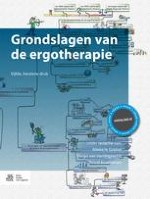Samenvatting
Het gebruik van assessments in het ergotherapeutisch proces kan veel meerwaarde hebben: het geeft inzicht aan de cliënt en de therapeut, zorgverleners krijgen meer inzicht in het effect van interventies, collega’s en verwijzers verbeteren en standaardiseren hun communicatie en zorgverzekeraars krijgen inzichten in de resultaten. Bij het gebruik van assessments is het van belang om de keuze voor het assessment bewust te maken. Drie vragen staan hierbij centraal: bij wie wil ik informatie verzamelen, wat wil ik aan informatie verzamelen, en met welk doel wil ik informatie verzamelen? Met het PEOP Occupational Therapy (PEOP OT)-procesmodel wordt duidelijk in welke fasen van de ergotherapeutische interventie assessments gebruikt worden. Assessments worden voornamelijk gebruikt in de inventarisatiefase en in de evaluatiefase, maar informatie verzamelen met behulp van assessments is een proces dat gedurende de gehele ergotherapeutische interventie doorloopt. Het is makkelijker een goede keuze te maken als er meer informatie beschikbaar is over het assessment. Daarom zijn in dit hoofdstuk tabellen opgenomen met assessments voor alle cliëntperspectieven binnen de ergotherapie. De tabellen voor het cliëntperspectief ‘de persoon en zijn systeem’ bestaan uit assessments voor kinderen, volwassenen en kinderen/volwassenen. De tabel voor de cliëntperspectieven ‘organisatie’ en ‘populatie’ is onder andere gericht op wijkgericht werken. De klinimetrische eigenschappen van de opgenomen meetinstrumenten zijn te vinden op
www.meetinstrumentenzorg.nl, een website van Zuyd Hogeschool.
